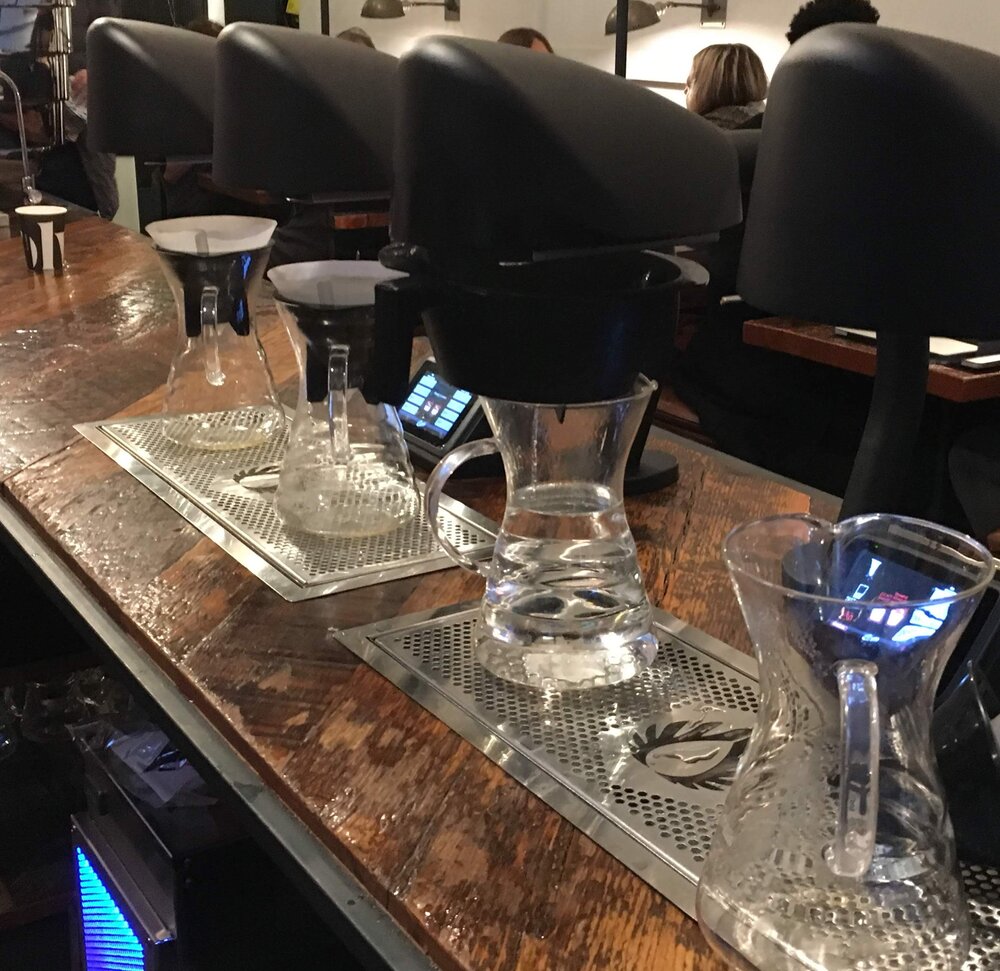What are the best dose and brewing ratio? - a podcast by Scott Rao
from 2020-02-05T23:02:12
How should you determine the optimal dose and brewing ratio for espresso or filter? Ongoing conversations I’ve been having with Jonathan Gagné and the recently published piece of espresso research by Chris Hendon et al, have been keeping this issue top of mind. I hope this post will provide readers with food for thought when making brewing decisions.
Rather than always relying on standard, popular ratios (eg 2:1 for espresso, 17:1 for filter), I recommend baristas consider a few factors when deciding on a ratio for a brewing method.
Desired TDS and Extraction Yield: each particular combination of EY and TDS can only be achieved by a unique brewing ratio. If for some reason you desire a specific TDS and EY combination, such as 1.4% TDS and 22% EY, there is only one ratio that can produce that pair of numbers. This also means that you may want to use different brewing ratios with different grinders. I recently brewed the same coffee as a v60 on my DE1 using two different grinders; one grinder achieved 24.5% EY/ 1.6 TDS. The other grinder could achieve only 21% EY/ 1.4 TDS. If my goal is to always have a TDS of 1.4 at the highest possible EY, I would consider using a higher brewing ratio with the first grinder.
Channeling: In percolation methods, it’s important to use a ratio that won’t lead to noticeable channeling or astringency. In espresso brewing, better puck prep will allow a barista to use a higher ratio (say, 3:1 as opposed to 2:1) without channeling. If you have poor puck prep, or if your grinder produces a lot of clumps, you may want to consider decreasing your brewing ratio to avoid astringency due to channels. In drip brewing, the more evenly you spray or pour the water over the coffee bed, the less channeling will occur. The more evenly the water extracts from the coffee bed, the higher the ratio (within reason) you can use without channeling.
Bed Depth: Whether pulling an espresso, brewing in a v60 or using a Fetco, each basket you use has an optimal range of bed depths. Batch brew bed depth should typically be 3cm—5cm. A device such as a v60 generally brews best in a range of 15g—22g of coffee (5cm—6 cm.) Coffees of extremely high or low density may require small adjustments in dose to maximize extraction. Note that many cafes that serve two-liter batch brews use baskets designed for larger brews. If you brew two-liter batches, the smallest-diameter baskets available for your batch brewer may help to increase the bed depth of your doses into the recommended range.
Flavor defects If you’re brewing a defective or poorly roasted coffee, you may improve flavor and mask some of flavor defects by lowering your ratio and extraction level. Intentionally underextracting charred, baked, or underdeveloped coffee can sometimes make it more palatable.
Beverage Sizes When planning a dose and ratio for espresso, it’s important to consider the sizes of your milk drinks, and how much total dissolved solids your shots will contain. For example, a 15g dose at 22% extraction would provide 3.3g of dissolved solids, while a 22g dose at a more modest 22% would provide 4.84g solids. While the 15g dose may be appropriate for a cappuccino or a cortado, its 3.3g of dissolved solids would nearly disappear in a 12oz latte. The 22g shot may be just right (for some) in the latte. Some cafes choose to use larger (20—22g) doses and to “split” the shots so they can use a single shot for straight espresso and very small milk drinks and two shots for larger milk drinks.
Do you have some thoughts on other factors to consider when determining a dose and brewing ratio? Please share your thoughts in the comments section. Thanks for reading.
Further episodes of Q
Further podcasts by Scott Rao
Website of Scott Rao
